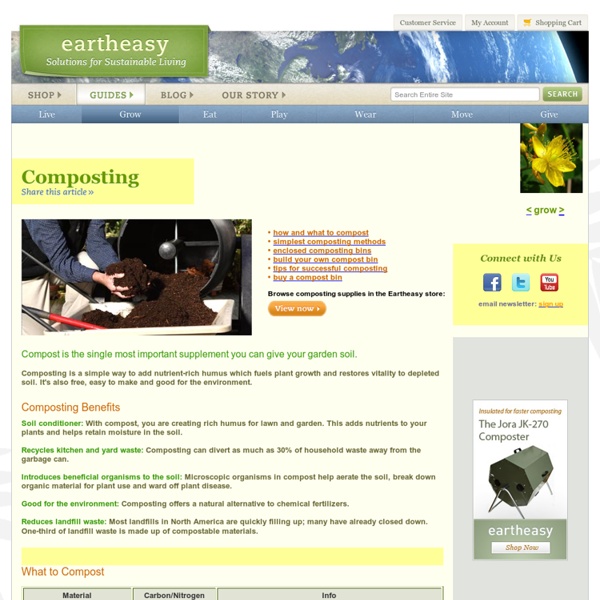Composting: a guide to making compost at home, using compost tumblers, bins & other composters
~ Activate your compost. 'Activators' can be added to your compost to help kick-start the process and speed up composting. Common compost activator materials are: comfrey leaves, grass clippings, young weeds, well-rotted chicken manure. ~ Flying insects attracted to your compost? Small fruit flies, especially, are naturally attracted to the compost pile. They can be discouraged by simply covering any exposed fruit or vegetable matter. ~ Unpleasant odors from your compost pile? ~ Is your compost pile steaming? ~ Is your compost pile soggy? ~ Matted leaves, grass clippings clumping together? ~ Problems with raccoons? ~ A moveable feast. ~ Additive only. ~ Take advantage of autumn's bounty.
Small Scale or Backyard Composting - Cornell Waste Management Institute
A significant fraction of the solid waste generated in the United States is organic material that can be recycled through small scale composting. There are many advantages to this strategy of waste management. Households, businesses and institutions may save money by composting items such as food scraps and yard trimmings while sending less waste to landfills and incinerators. In addition, small scale composting is often the most environmentally sound way of recycling organic materials. The finished compost is a good soil amendment for a variety of gardening and landscape uses. Health Considerations. Just as individuals vary in their resistance to disease, a few individuals may be particularly sensitive to some of the organisms in compost. To minimize these potential risks, common OSHA approved dust masks can be worn under dry and dusty conditions, especially when the compost is being turned. Composting in Schools. Home Composting Slide Show. Home Garden Use of Milorganite®.
Easy Project: How to Build a Compost Pile
Here’s what you need: 1. Carbon-rich “brown” materials, such as fall leaves, straw, dead flowers from your garden, and shredded newspaper. 2. Nitrogen-rich “green” materials, such as grass clippings, plant-based kitchen waste (vegetable peelings and fruit rinds, but no meat scraps), or barnyard animal manure (even though its color is usually brown, manure is full of nitrogen like the other “green” stuff). 3. 4. Here’s what to do: Start by spreading a layer that is several inches thick of coarse, dry brown stuff, like straw or cornstalks or leaves, where you want to build the pile. Continue layering green stuff and brown stuff with a little soil mixed in until the pile is 3 feet high. Every couple of weeks, use a garden fork or shovel to turn the pile, moving the stuff at the center of the pile to the outside and working the stuff on the outside to the center of the pile. You don’t need a compost bin to make compost. Turn kitchen scraps into super-fertile soil!
Related:
Related:



